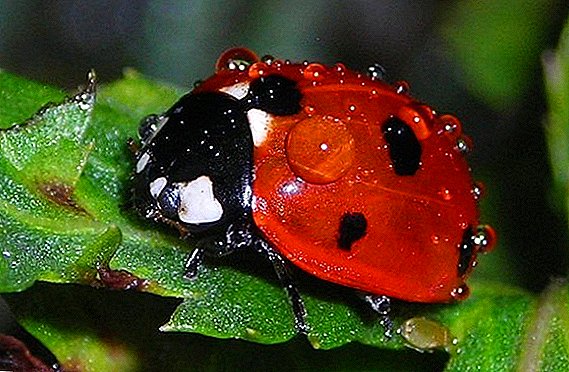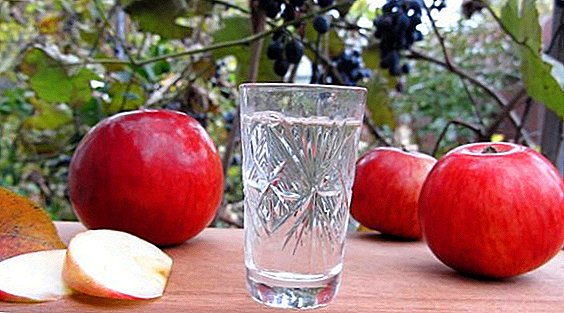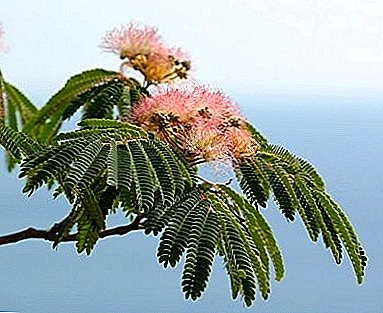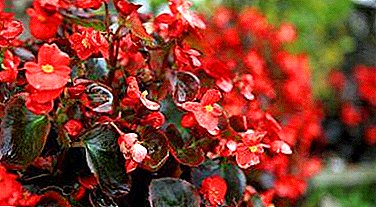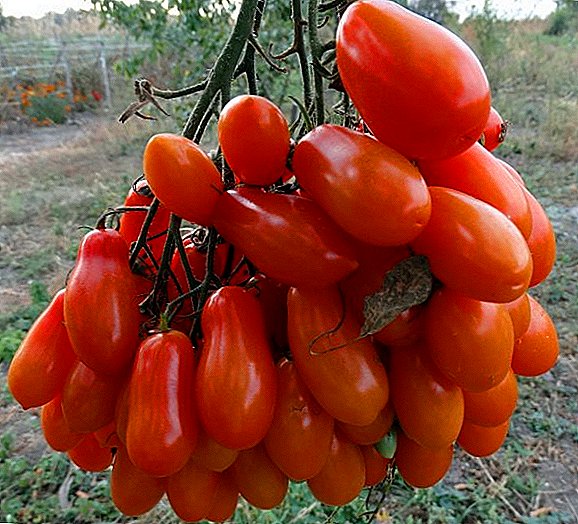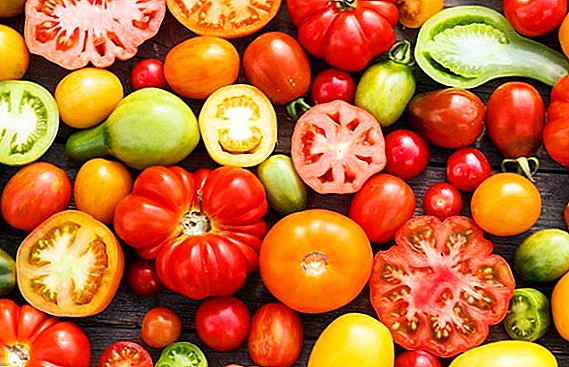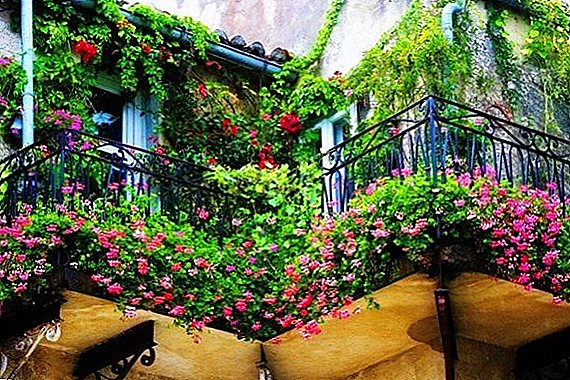 Selecting a plant for the southern balcony is a difficult task, since most of the truly beautiful flowers do not tolerate high temperatures or direct sunlight. We will help you choose a compromise option that will turn your window sill or balcony into a blooming greenhouse. Consider the placement of pots for different types of balconies.
Selecting a plant for the southern balcony is a difficult task, since most of the truly beautiful flowers do not tolerate high temperatures or direct sunlight. We will help you choose a compromise option that will turn your window sill or balcony into a blooming greenhouse. Consider the placement of pots for different types of balconies.
Balcony gardening rules
Before you start planting plants on the balcony, you need to discuss the basic rules of planting, on which depends not only the beauty of the overall composition, but also the condition of the flowers themselves.
Horizontal layout
Horizontal design is best suited for large long loggias, in which there is enough space to place the plants in one row. Consider several options for the location of flowerpots with horizontal design.
First option involves placing pots on the floor, near the inner or outer wall. Shade-tolerant plants are suitable for this type of accommodation, but they also do not tolerate direct sunlight. 
Important! It should be understood that the first option provides for a solid external wall, and not a forged protective grid.
Second option - placement of flowerpots on the railing of the outer wall of the balcony. In this case, it is worthwhile to give preference to curly colors that perfectly tolerate direct sunlight.
You can place as one continuous long pot in which all plants will grow at once, as well as single vessels. 
In addition to flowers on your balcony, you can grow: cucumbers, dill, coriander, tomatoes, savory, allspice.
Vertical design
Vertical design provides that the flowers on the balcony will be arranged in a kind of cascade from the bottom up.
The vertical arrangement of plants also has several variations:
- Fabric with pockets. You need to take a large enough piece of cloth, make pockets on it for flowerpots and hang / glue on the wall. Then a small pot with a flower is inserted into each pocket.

- Installing tapestries on the inner or side wall of the balcony. This option is suitable for climbing flowers that require a lot of space. The flowerpot with the plant is placed on the floor, and next to it a grid is mounted on the wall, along which our "liana" will rise in a vertical plane.

- Modular design with departments for flowerpots. In many flower shops you can find a kind of "flower wall" - a high stand for flowerpots with a large number of individual cells into which pots are inserted.

Did you know? To avoid overheating of the root system, choose pots painted white or less bright warm colors.
Choice of colors
We proceed to the selection of suitable plants for a balcony that will withstand direct sunlight, frequent drafts and invasions of various pests.
Annuals
Let's start with the annual flowers for the balcony, which can "survive" on the sunny side.
The first flower on our list is purslane, or dandur. The plant is considered to be perennial, but in our conditions it is grown as an annual. Average height -30 cm, the flowers are painted in yellow, red and white.
The plant is interesting because it perfectly withstands direct sunlight on the southern balconies and has a long flowering period (from June to September). Also care for portulac comes down to regular watering. 
Important! Dandoor has a high resistance to diseases and pests, but it can still be affected by aphids or the fungus Albugo portulaceae.
The second candidate is lobelia. Another perennial plant that is grown as a single year old. Ampelnoe plant has a stem, reaching 50 cm tall, blooms with small blue, orange or purple flowers.
Lobelia is not unpretentious, but it has a huge plus - the possibility of re-flowering after cutting off the flowered part. 
Important! The elevated part of lobelia is poisonous.
If you like different variations of daisies, then the next flower will be your favorite. Gatsania - "African chamomile", which belongs to the Astrovie family.
There are both perennial and annual variations of gazania, but all of them are distinguished by good drought tolerance.
The flower grows up to 30 cm in height, during flowering it pleases with large baskets with a diameter of up to 9 cm, which are painted in warm colors.
Gatsania amazes with the fact that up to 30 inflorescences can form on one plant, turning a bush into a huge bouquet of large daisies.  The plant feels great on the south side of the balcony in direct sunlight. The other positive side is a large amplitude of permissible temperatures at which gatsania blooms beautifully and does not lag behind in development (from -5 to +30 ° С).
The plant feels great on the south side of the balcony in direct sunlight. The other positive side is a large amplitude of permissible temperatures at which gatsania blooms beautifully and does not lag behind in development (from -5 to +30 ° С).
Unpretentious "African" will delight you with bloom from early July until the first frost. The flower is especially relevant to the southern regions.
Biennial
Now let's talk about biennial plants that will look great on the south side of the balcony.
Let's start with daisieswhich are known to all gardeners. A small herbaceous plant that pleases its owners with beautiful terry or semi-double buds.
The main advantage of the plant is resistance to all pests and diseases, but some viral diseases can still hit the daisy. The flower tolerates direct sunlight and is not picky about the composition of the substrate. 
Important! Although the flower is perennial, it is grown in a culture as a two-year-old.
Another two-year-old who is suitable for a hot southern balcony, - Turkish, or bearded, carnation. In contrast to the high garden variations, this plant has a length of the aerial part from 20 to 60 cm, and its height can always be reduced to acceptable size.
Like the above flowers, carnation perfectly tolerates direct sunlight and does not require special care. The advantages include drought resistance and frost resistance.  The following is a kind of violet - Vittrock violet. The plant is a perennial, but cultivated as a two-year. The maximum height of the aboveground part is 30 cm, the plant is compact, strongly branchy.
The following is a kind of violet - Vittrock violet. The plant is a perennial, but cultivated as a two-year. The maximum height of the aboveground part is 30 cm, the plant is compact, strongly branchy.
Flowers of various colors, there are variations with color spots and stripes. The buds are large, the average diameter is 7 cm.
The main advantage of the flower is its versatility, as it grows well both in the shade and under direct sunlight. Suitable for more northern regions, as the optimum temperature for violets is 10-15 ° C. 
Perennial
Perennial balcony flowers for the sunny side are represented by a huge variety. Many of the above flowers can also be grown as perennials. However, the problems associated with their hibernation, make the plants too moody, and care for them - more difficult.
- Pelargonium. The flower belongs to the Geranium family, it grows in nature in southern Africa, therefore it tolerates direct sunlight and lack of moisture. The height of the flower is from 35 to 75 cm, the stems are erect, slightly branched. There are many types of pelargonium, which differ in height and variations of inflorescences.

Did you know? The smell of pelargonium frightens off flies, but at the same time many people cannot stand it, as it can cause headaches or allergies.
- Iridodictium Perennial unpretentious bulbous plant that grows up to 15 cm in height. A very early flower that forms a bud in the warm regions already at the end of March.
Iridodictium is interesting in that it perfectly carries direct sunlight, blooms for a long time and does not require frequent soil moistening.
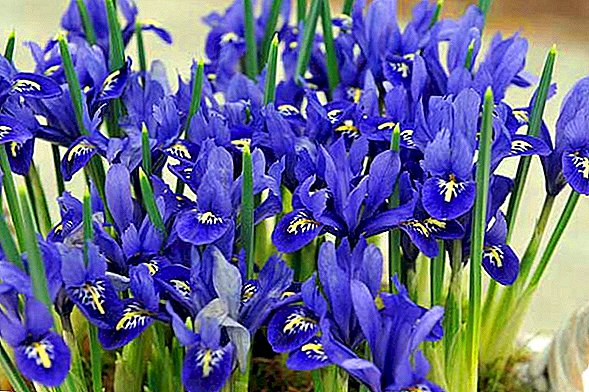
- Surfinia. Ampelnye type of petunia, which is suitable for growing on the balcony. The flower can not boast of unpretentiousness, however, its appearance will not leave indifferent any hostess.
Surfinia requires a large amount of light and abundant watering, does not suffer from transient rain or wind. With proper care turns into a blooming ball, which is covered with small bright buds.
Important! Hanging stems can be up to 2 meters long.

Tips and recommendations for the care of flowers on the sunny side
Having discussed the options of colors for the sunny side of the apartment, let's talk about the rules of their content in not very comfortable conditions.
The fact is that flowers, which are constantly in direct sunlight, overheat greatly, which means that if you water them with cool water, the contrast will be very strong, and the plants may get sick or die.
Therefore, the first rule - water the flowers only with warm water or the same temperature as the environment.
Many people know that droplets of water, falling on the leaves, create the effect of a lens. That is, they refract sunlight in such a way that it causes burns.  From here follows the second rule - spraying of plants is carried out only until sunrise, in the evening or on an overcast day.
From here follows the second rule - spraying of plants is carried out only until sunrise, in the evening or on an overcast day.
During a strong sun, the moisture evaporates very quickly, causing the earth to cool. In the same way, the "cooling system" in the human body works, which releases perspiration during severe overheating.
Learn about the fungicides that destroy the causative agents of your plants: "Alirin B", "Skor", "Fundazol", "Topsin-M", "Gamair".
As in the case of irrigation with cold water, wetting the earth at the time when the sun's rays hit the plants is prohibited. The third rule - we water the flowers only in the morning, in the evening or when the sun has hidden behind the rain clouds.
During loosening of the earth, the lower, more humid layer gets to the surface, and accelerated evaporation of moisture occurs.
Consequently, if the soil is loosened during the sun, the already overheated roots will receive an additional “dose” of heat, and the lower moist soil layer, from which moisture will evaporate, will not cool the root system.  The soil dries out faster and an airtight crust will immediately form. The fourth rule is to loosen the substrate and remove weeds only at the moment when the sun rays do not fall on the pot.
The soil dries out faster and an airtight crust will immediately form. The fourth rule is to loosen the substrate and remove weeds only at the moment when the sun rays do not fall on the pot.
Now you have enough information to properly place the flowers on the balcony, disembark the most unpretentious options and not make a mistake during the care.
Use our advice and do not be afraid to make mistakes, as experience comes with time.








